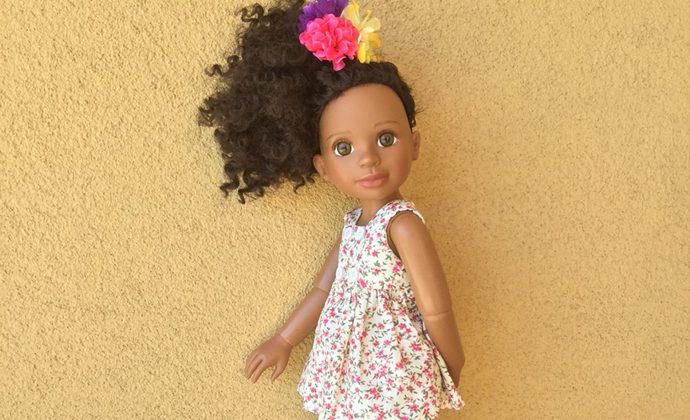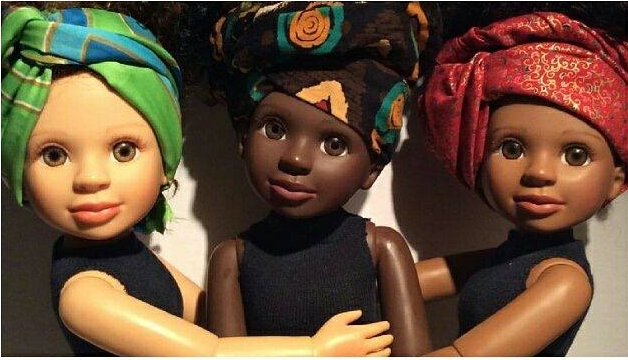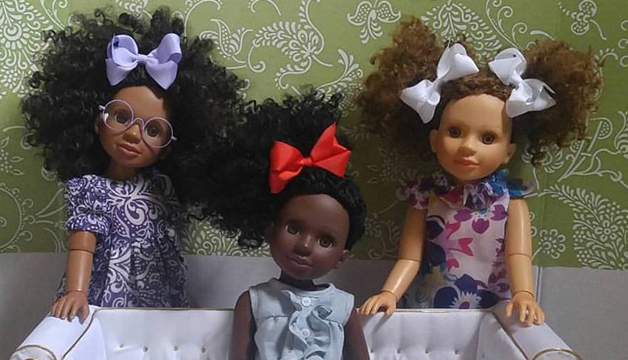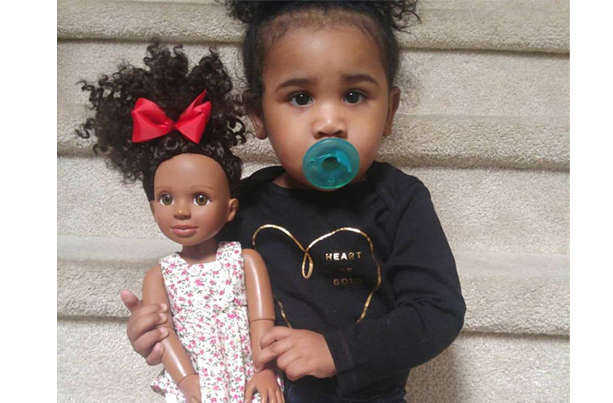I fondly remember getting my Cabbage Patch Kid. I was six-years old and, back then, the dolls came in cardboard boxes with no window—just a green line drawing of a doll. I’m pretty sure you could pick a gender, but that’s it. The doll was just as likely to have long red braids as curly blonde hair. There was zero expectation you’d end up with a doll that looked like you. Back then, I didn’t think it was any sort of a goal any way. Who cares if the doll looks like me? Easy for me to say. My doll was always white, and so am I.
Fast forward to grade 6. My new best friend wasn’t white, and she had a Cabbage Patch that wasn’t either. I had never seen a black Cabbage Patch Kid before. But Sonia was black, and so was her doll, and I thought ‘well, yeah. That makes sense.’
I still don’t even know how Sonia got her hands on a coveted black Cabbage Patch Doll. I don’t recall ever having seen one on the shelves. And I definitely never saw any Asian dolls, nor any dolls with hijabs.
That was about 30 years ago, and times have changed, but not as much as you’d think or hope. At some point along the marketing journey, American Girl and the many doll brands we know and love clued in that little kids (mostly girls….boys would be hard pressed to find a boy doll. But that’s a story for another day) want dolls to play with that remind them of themselves. They started making dolls with all different hair/eye colour combinations, different hair lengths and types, and different ethnicities. But, when I go to the store in my town (my very multi-cultural town) that sells a popular 18″ doll brand, the shelves are stacked with mostly white dolls. The other dolls might be available but they’re certainly not given equal shelf space, or even close to, in a town where at least half the children are not, in fact, white.
Queen Cee Robinson, a Hamilton, Ontario mom, noticed the same thing and has made it her mission to even the scale. But she doesn’t just want to make a single kind of black doll or Asian doll or Muslim doll. She is working to fill a real void in the market and create dolls with all sorts of hair textures and skin tones. Dolls with afros and twists and braids, dolls with freckles, biracial dolls, and a variety of head wraps and coverings.
‘[My daughter] was about 5 at the time and I wanted to make sure that we could have conversations about diversity and culture.’ she told The Huffington Post Canada. ‘I was basically led to customize because as much as people will say, ‘Oh there’s black dolls here in Canada, you just have to go to the stores’—well, there’s not. There’s maybe one out of a slew of other dolls that are not black or reflective of someone of ethnicity.’
So she took to the drawing board and started creating dolls with different skin tones and hair textures, and a much larger variety of both in order to better ensure a young girl can see herself reflected in a doll.
Queen Cee translated the frustration she felt with the lack of selection of dolls for her own child into Herstory Dolls. Using her passion and talent, she is seeking to fill a void and serve a greater purpose.
‘As I started customizing dolls for my daughter, the passion for the art then developed into me becoming a custom doll artist, filling the void that way with special custom [features].’ she said. ‘The purpose of Herstory Doll is not only about the visual representation with our dolls, but as a creative person I also wanted to make sure that what I am doing has an even bigger purpose, which is empowering kids (and doll lovers alike) to create, develop their own stories.’
Queen Cee, a stay-at-home mom and a daycare provider, finds time in her packed schedule to advocate for Herstory Dolls and working as hard as she can to bring her vision, of these dolls being a mainstay on the market, to fruition.
Dolls will run about $120 per doll and, while Robinson concedes the price point might be a challenge in a saturated market, she feels the value add of the customization makes them priceless.
Getting this far in her journey to bring Herstory Dolls to market has not been easy, and securing financing has been an ongoing battle. But she is not deterred.
‘[The challenges are] not going to stop me from pushing through and finding other ways to get this off the ground, I believe in what I do and what I am doing way too much and from the response I have been getting from people all over the world, I will pushing as hard as I can to bring this doll line and this creative movement I am developing into fruition.’
Her business is still in relative infancy but people who are interested can subscribe to the website to see when the first round of pre-orders are released later this month. It will be an uphill battle for Robinson. The doll market has some hefty competition. But her offering is unique, and she knows it. Robinson has every intention of battling until every child who wants to see themselves reflected in the dolls with which they play has the opportunity to have a Herstory Doll.
Tagged under: dolls,biracial dolls,Herstroy dolls,custom dolls
Category: gear









